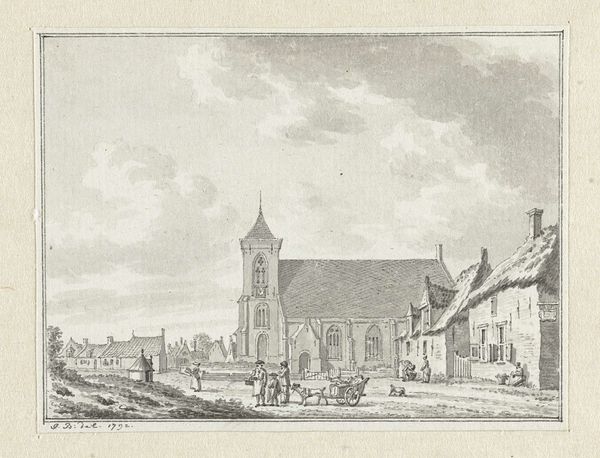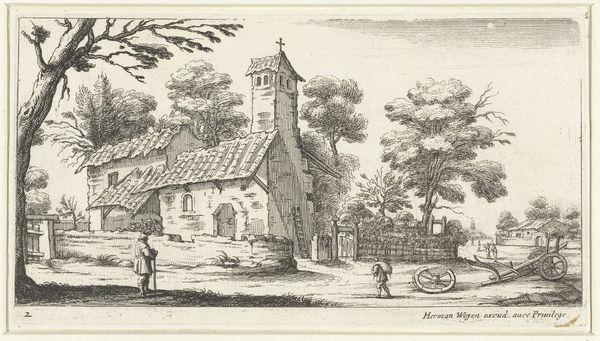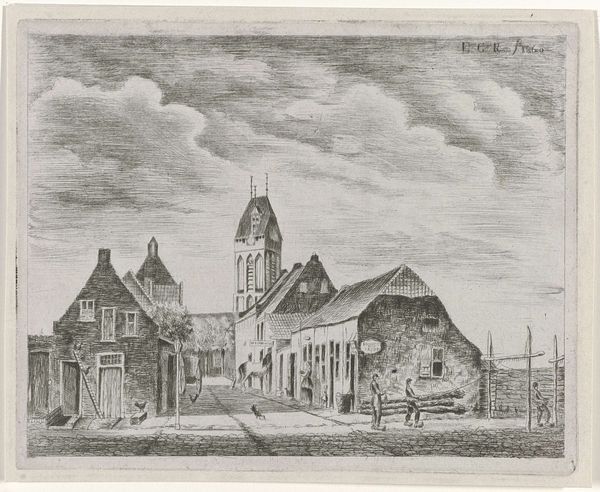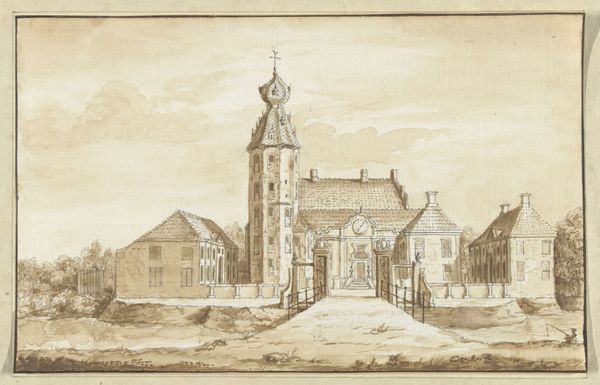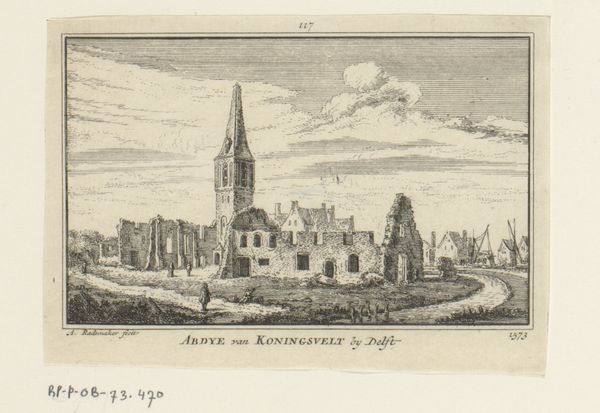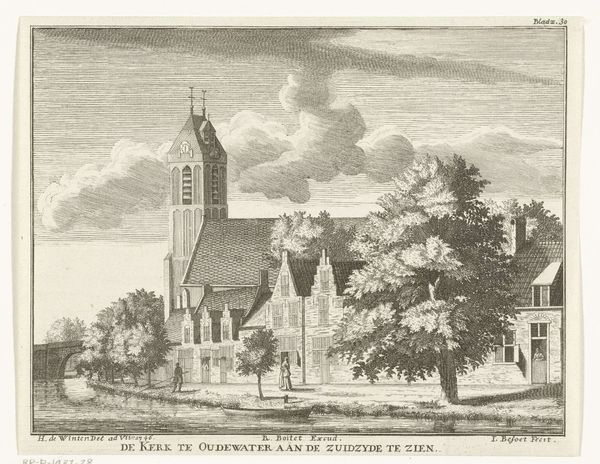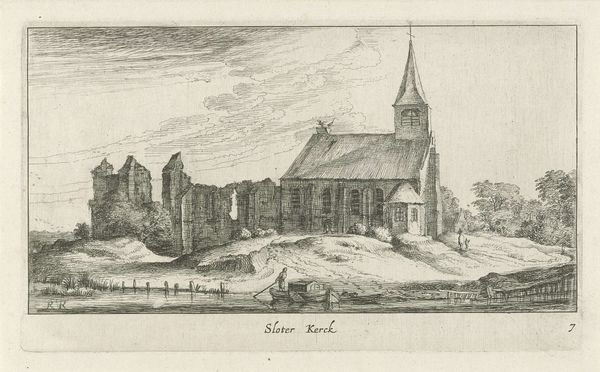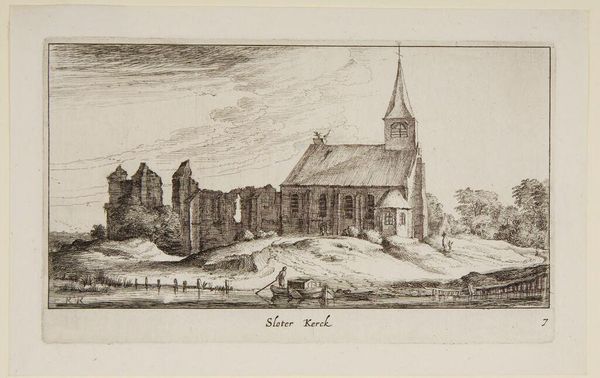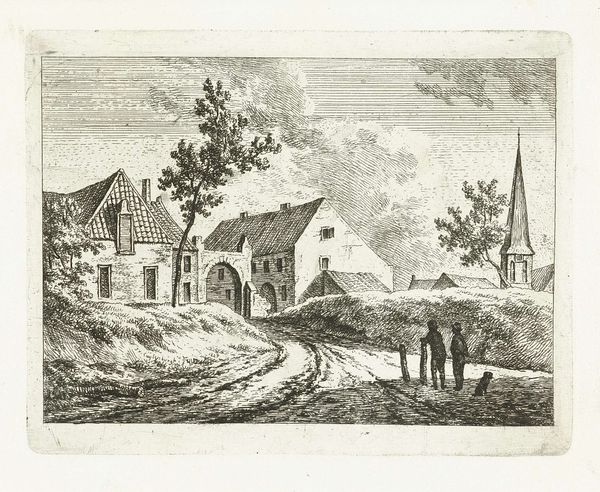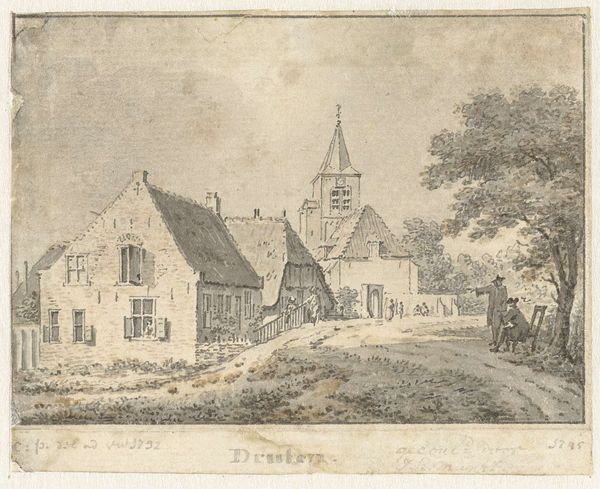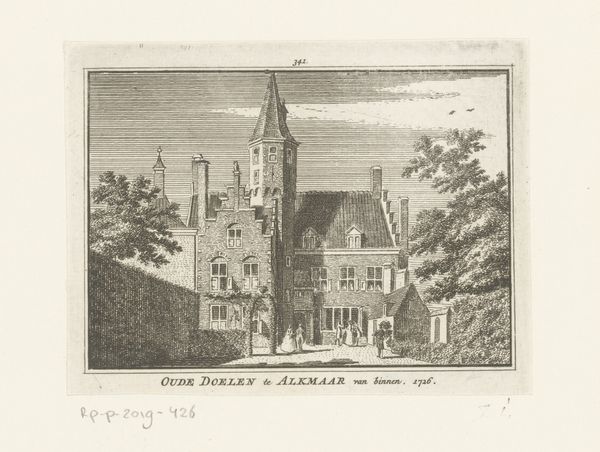
drawing, print, paper, pen, engraving
#
drawing
#
dutch-golden-age
# print
#
pen sketch
#
old engraving style
#
landscape
#
paper
#
pen
#
cityscape
#
engraving
Dimensions: height 80 mm, width 115 mm
Copyright: Rijks Museum: Open Domain
Editor: This is "Gezicht op Egmond aan Zee, 1620," a pen and engraving print by Abraham Rademaker, though created much later, sometime between 1727 and 1733. The landscape feels stark, almost mournful, with those dilapidated structures. What strikes you most about this work? Curator: What resonates with me is the depiction of Egmond aan Zee not just as a location, but as a site carrying the weight of history and social change. Rademaker, working in the 18th century, revisits a scene labeled '1620.' What does it mean to look back at a specific moment through the lens of a different era? What historical events do you think may be referenced in the ruins depicted? Editor: I’m guessing the Eighty Years’ War against Spanish rule, given the date. It looks like the church is already damaged. Curator: Exactly. The war reshaped Dutch society and identity. This image then becomes a commentary on resilience and perhaps, also, loss. What I find compelling is how Rademaker’s choice of medium – printmaking – democratized the image. This scene becomes accessible, allowing a wider audience to reflect on their history and its impact on their present. It raises questions about national identity, collective memory, and the role of art in shaping those perceptions. Do you see anything else that implies commentary or judgment? Editor: Maybe the people near the buildings? They seem so small compared to the structures. Curator: Precisely! That's where the image intersects with issues of social scale and human agency within a historical narrative. So what new insights will you carry from this encounter with Rademaker's work? Editor: I'll definitely be thinking more about how artists use the past to comment on their present. Curator: Agreed. It pushes us to think about art as an active participant in historical and cultural dialogues.
Comments
No comments
Be the first to comment and join the conversation on the ultimate creative platform.
